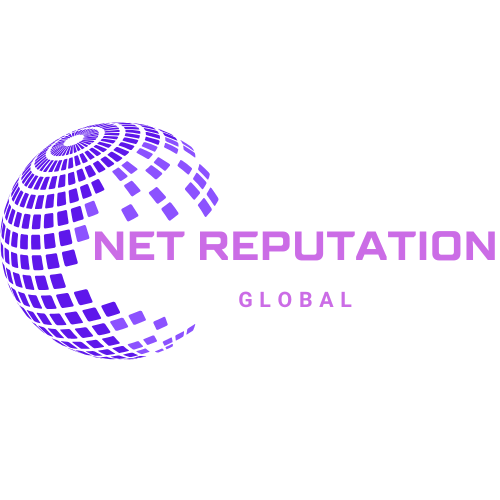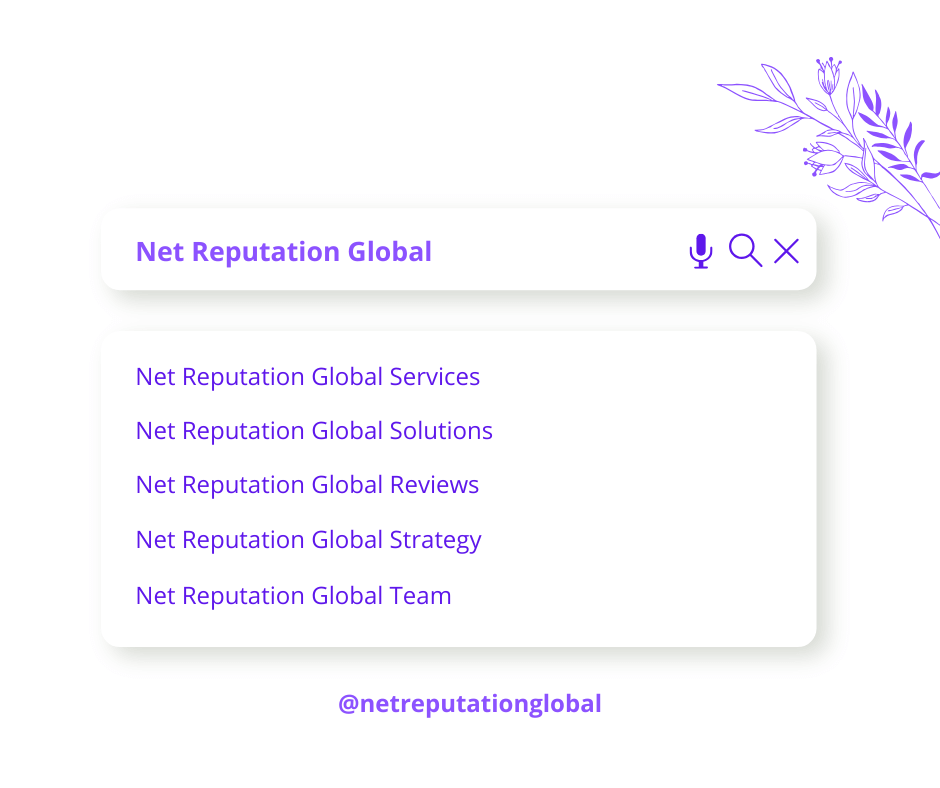
A single fake review can cost an e-commerce business $40,000 in lost revenue. A data breach can destroy customer trust in 24 hours. A supply chain scandal can erase years of brand building overnight. Welcome to e-commerce in 2025, where online reputation risks have evolved from minor annoyances to existential threats.
The numbers paint a stark picture: 14% of all e-commerce reviews are now AI-generated fakes, 32.4% of successful hacking attempts target online retailers, and social commerce platforms like TikTok Shop are creating entirely new categories of reputation risks that didn’t exist just two years ago. If you’re not prepared for these evolving threats, your e-commerce business is operating on borrowed time.
The New Reputation Battlefield: Understanding E-commerce’s Unique Vulnerabilities
E-commerce businesses face a perfect storm of reputation risks that brick-and-mortar stores never encounter. You’re vulnerable 24/7, across multiple platforms, in every market you serve. Your reputation isn’t just about your website anymore—it’s scattered across marketplaces, social platforms, review sites, and channels you might not even know exist.
The Multiplication Effect
When a physical store receives a complaint, it affects that location. When an e-commerce business faces a reputation attack, it impacts:
- Your primary website’s conversion rates
- Marketplace rankings on Amazon, eBay, and others
- Social commerce performance
- Search engine visibility
- Email deliverability
- Payment processing relationships
- Supplier partnerships
This multiplication effect means a single reputation incident can cascade across your entire digital ecosystem, creating compound damage that’s exponentially harder to repair than prevent.
The Permanence Problem
In e-commerce, reputation damage doesn’t fade with time—it gets archived, screenshotted, and indexed. That one-star review from 2019? It’s still influencing purchase decisions in 2025. The Twitter complaint that went viral? It’s been preserved in digital amber, ready to resurface whenever someone searches your brand name.
The Seven Deadly Reputation Risks Every E-commerce Business Faces
1. The AI Review Apocalypse
The explosion of AI-generated fake reviews represents the most significant threat to e-commerce reputation in 2025. With 2.3 million reviews confirmed as partly or entirely AI-generated in recent studies, the problem has reached crisis proportions.
The New Face of Fake Reviews:
- Sophisticated language that passes basic detection
- Coordinated posting patterns that mimic organic behavior
- Platform-specific optimization that exploits algorithm weaknesses
- Emotional manipulation techniques that influence real customers
The Real Cost: Beyond the immediate sales impact, AI-generated reviews can trigger:
- Platform penalties and account suspensions
- FTC fines up to $52,000 per violation (as of August 2024)
- Legal liability for unfair competition
- Complete erosion of customer trust
Defense Strategies:
- Implement AI-powered detection tools that analyze linguistic patterns
- Monitor review velocity for unnatural spikes
- Build authentic review generation campaigns that outpace fake ones
- Document and report suspicious patterns immediately
2. The Cybersecurity-Reputation Connection
With 92.4% of e-commerce sites having at least one security vulnerability, data breaches have become not if, but when scenarios. The reputation impact extends far beyond the immediate breach:
Primary Damage Vectors:
- Customer data exposure leading to identity theft
- Payment information compromise destroying financial trust
- Account takeovers damaging customer relationships
- Supply chain infiltration affecting product authenticity
The Trust Erosion Timeline:
- Hour 1-24: Initial panic and customer exodus
- Day 2-7: Media coverage amplifying negative perception
- Week 2-4: Regulatory investigations beginning
- Month 2-6: Long-term trust metrics showing 40-60% decline
- Year 1+: Persistent reputation damage affecting new customer acquisition
Proactive Protection:
- Implement zero-trust architecture
- Regular penetration testing with reputation impact assessment
- Cyber insurance that includes reputation recovery
- Transparent security communication building trust before breaches
3. Social Commerce Reputation Chaos
Social commerce will reach $1.33 trillion by 2029, but it’s creating unprecedented reputation risks. TikTok Shop’s 40%+ conversion rates come with volatility that can destroy brands overnight.
Platform-Specific Risks:
- TikTok: Viral negative reviews reaching millions in hours
- Instagram Shopping: Influencer scandals contaminating brand perception
- Facebook Marketplace: Scammer associations damaging legitimacy
- Pinterest Shopping: Algorithm changes hiding products without warning
The Virality Vortex: Social commerce operates on different physics than traditional e-commerce. A single creator’s negative experience can:
- Reach 10 million views in 48 hours
- Spawn thousands of response videos
- Create hashtag movements against your brand
- Trigger copycat complaints seeking viral fame
Survival Tactics:
- Build relationships with micro-influencers as reputation defenders
- Create rapid response teams for viral incidents
- Develop platform-specific crisis protocols
- Monitor trending hashtags containing your brand terms
4. Supply Chain Scandals and ESG Expectations
Modern consumers don’t just buy products—they buy values. With 89% of companies experiencing supply chain issues in the past five years, reputation risks now extend deep into your supplier network.
Hidden Reputation Bombs:
- Supplier labor violations surfacing in investigations
- Environmental damage from manufacturing partners
- Conflict minerals in your electronics supply chain
- Carbon footprint exceeding marketed claims
The Transparency Trap: New regulations requiring Scope 3 emissions disclosure mean your entire supply chain’s environmental impact becomes public. Consumers armed with this data are increasingly making purchase decisions based on values alignment.
Risk Mitigation Framework:
- Comprehensive supplier auditing programs
- Blockchain-verified supply chain transparency
- Proactive communication about improvement efforts
- Partnership with certified ethical suppliers
5. Platform Dependency Disasters
Most e-commerce businesses don’t realize they’re one algorithm update away from reputation catastrophe. Platform dependency creates unique vulnerabilities:
Amazon Reputation Roulette:
- Account suspensions based on competitor false reports
- Buy Box loss due to reputation metrics
- A-to-Z claims destroying seller ratings
- Review manipulation accusations (even when innocent)
The eBay Ecosystem Effect:
- Feedback system that punishes sellers disproportionately
- Detailed Seller Ratings (DSRs) impacting visibility
- Payment holds triggered by reputation drops
- International reputation issues from cultural misunderstandings
Marketplace Mitigation:
- Diversify across multiple platforms
- Build direct-to-consumer channels
- Maintain platform-specific reputation strategies
- Create contingency plans for platform bans
6. Customer Expectation Inflation
E-commerce has created a generation of customers with impossibly high expectations. Amazon’s same-day delivery has made two-day shipping feel slow. This expectation inflation creates constant reputation risks:
The Moving Target Problem:
- Delivery expectations increasing 23% year-over-year
- Customer service response time expectations now under 1 hour
- Product quality expectations influenced by edited social media
- Price expectations disconnected from actual costs
The Comparison Trap: Every customer compares you to:
- Amazon’s logistics capabilities
- Zappos’ customer service
- Apple’s packaging experience
- Warby Parker’s try-before-you-buy model
Managing Expectation Reality:
- Set clear, realistic expectations upfront
- Over-deliver systematically on key metrics
- Educate customers about your unique value
- Build loyalty programs that reward patience
7. The Returns and Refunds Reputation Trap
E-commerce return rates average 20-30%, triple that of physical stores. How you handle returns directly impacts your reputation:
Return Fraud Impact:
- 13.7% of returns are fraudulent
- Wardrobing (buy, use, return) affecting fashion retailers
- Empty box scams damaging seller metrics
- Friendly fraud where customers claim non-delivery
Policy Paralysis: Too strict: Reputation for poor customer service Too lenient: Financial unsustainability and fraud magnet
Strategic Solutions:
- Implement smart return policies based on customer history
- Use AI to detect return fraud patterns
- Create VIP return privileges for loyal customers
- Transparent communication about return impact on prices
Advanced Threat Detection: Building Your Early Warning System
The Reputation Command Center
Leading e-commerce brands operate 24/7 reputation monitoring centers tracking:
Real-Time Metrics:
- Review velocity across all platforms
- Social media mention sentiment
- Customer service escalation rates
- Technical performance indicators
- Competitor reputation movements
Predictive Indicators:
- Search query patterns indicating brewing issues
- Support ticket language becoming more aggressive
- Product return reason clustering
- Employee satisfaction scores (unhappy employees leak problems)
The STORM Protocol for Crisis Response
When reputation threats emerge, activate the STORM protocol:
S – Scan: Comprehensive assessment of threat scope and velocity
T – Triage: Prioritize response based on potential impact:
- Tier 1: Existential threats requiring immediate C-suite involvement
- Tier 2: Significant risks needing department-head coordination
- Tier 3: Manageable issues for standard response teams
O – Orchestrate: Coordinate response across all channels:
- Customer service scripts
- Social media messaging
- Email communications
- Platform-specific responses
R – Respond: Execute with speed and authenticity:
- Acknowledge within 1 hour
- Provide substantive update within 6 hours
- Show concrete actions within 24 hours
- Follow up until resolution
M – Monitor: Track effectiveness and adjust:
- Sentiment shift measurement
- Customer retention impact
- Sales correlation analysis
- Long-term reputation recovery
Platform-Specific Reputation Defense Strategies
Amazon: The Algorithm Game
Amazon’s reputation system operates on complex algorithms that determine your success or failure:
Critical Metrics:
- Order Defect Rate (must stay under 1%)
- Late Shipment Rate (under 4%)
- Pre-fulfillment Cancel Rate (under 2.5%)
- Customer Response Time (under 24 hours)
Hidden Factors:
- Velocity of positive reviews
- A-to-Z claim win rate
- Return initiation reasons
- Customer question response quality
Optimization Strategies:
- Implement predictive inventory management
- Use Fulfillment by Amazon strategically
- Build automated customer communication flows
- Monitor competitor sabotage attempts
Shopify: The Direct-to-Consumer Challenge
Running your own Shopify store means total reputation responsibility:
Unique Vulnerabilities:
- No marketplace trust to leverage
- SEO reputation directly impacts traffic
- Payment processor relationships at risk
- App integrations creating security vulnerabilities
Building Trust From Scratch:
- Implement comprehensive trust badges
- Showcase security certifications prominently
- Build content marketing for reputation
- Leverage customer stories authentically
Social Commerce Platforms: The Wild West
Each social platform requires unique reputation strategies:
TikTok Shop:
- Partner with authentic creators
- Respond to comments in real-time
- Create response videos to complaints
- Build community defender networks
Instagram Shopping:
- Curate user-generated content carefully
- Monitor tagged posts for reputation risks
- Build relationships with micro-influencers
- Use Stories for transparency
Facebook Marketplace:
- Maintain rapid response times
- Build local community presence
- Address scam concerns proactively
- Leverage Facebook groups strategically
The Technology Stack for E-commerce Reputation Defense
Essential Tools for 2025
Monitoring and Analytics:
- Brandwatch: Social listening across platforms
- Reputology: Multi-location review monitoring
- Mention: Real-time alert system
- Hootsuite Insights: Social sentiment tracking
Response Management:
- Zendesk: Unified customer communication
- Sprout Social: Social media management
- BirdEye: Review response automation
- Podium: Messaging centralization
Security and Trust:
- Cloudflare: DDoS protection and performance
- TrustGuard: Security certification display
- Norton Shopping Guarantee: Purchase protection
- McAfee SECURE: Trust mark certification
AI and Automation:
- MonkeyLearn: Sentiment analysis
- Lexalytics: Text analytics
- IBM Watson: Predictive modeling
- Google Cloud AI: Custom model development
Integration Architecture
Creating a unified reputation defense system requires careful integration:
- Data Collection Layer: APIs pulling from all platforms
- Processing Layer: AI analysis and pattern recognition
- Alert Layer: Threshold-based escalation systems
- Response Layer: Coordinated action protocols
- Analysis Layer: Performance tracking and optimization
The Financial Impact: Understanding True Reputation Costs
Direct Revenue Impact
Conversion Rate Correlation:
- 1-star decrease in rating = 5-10% conversion drop
- Negative reviews on page 1 = 13% cart abandonment increase
- Security badge absence = 18% checkout abandonment
- Slow response to complaints = 27% repeat purchase decrease
Hidden Costs Most Businesses Miss
Customer Acquisition Cost (CAC) Increase: Poor reputation increases CAC by 25-50% through:
- Lower ad click-through rates
- Higher cost-per-click in competitive bidding
- Reduced organic search visibility
- Decreased referral rates
Operational Overhead:
- Crisis management team costs
- Legal fees for false review litigation
- Platform reinstatement expenses
- Reputation repair service fees
Opportunity Costs:
- Lost partnership opportunities
- Rejected by premium payment processors
- Excluded from marketplace promotions
- Inability to launch in new markets
Building Reputation Resilience: The Proactive Approach
The Three Pillars of Reputation Resilience
1. Prevention Infrastructure Build systems that prevent reputation damage before it occurs:
- Quality control at every touchpoint
- Proactive customer satisfaction monitoring
- Employee training on reputation impact
- Vendor reputation requirements
2. Response Capability Develop world-class response mechanisms:
- 24/7 monitoring systems
- Trained response teams
- Executive escalation protocols
- Legal action capabilities
3. Recovery Expertise Master the art of reputation recovery:
- Strategic content creation
- Search engine optimization
- Positive review generation
- Community building initiatives
The Reputation Insurance Model
Forward-thinking e-commerce businesses now treat reputation like any other insurable risk:
Coverage Components:
- Crisis management expenses
- Revenue loss compensation
- Legal defense costs
- Public relations campaigns
Premium Factors:
- Industry risk profile
- Historical reputation incidents
- Current reputation scores
- Preventive measures in place
Future-Proofing Your E-commerce Reputation
Emerging Threats on the Horizon
Deepfake Product Reviews: Video reviews using deepfake technology to create convincing but fake testimonials
Quantum Computing Attacks: Advanced computing breaking current encryption, exposing customer data instantly
Metaverse Reputation: Virtual world interactions affecting real-world e-commerce reputation
AI Customer Impersonation: Bots creating sophisticated fake customer interactions
Preparing for Tomorrow’s Challenges
Build Adaptive Systems: Create reputation management systems that can evolve with new threats
Invest in Relationships: Strong customer relationships provide reputation resilience
Embrace Transparency: Radical transparency becomes a competitive advantage
Lead with Values: Clear values attract customers who become reputation defenders
The E-commerce Reputation Transformation Roadmap
Phase 1: Assessment (Weeks 1-2)
- Comprehensive reputation audit
- Vulnerability identification
- Platform-specific risk analysis
- Competitive reputation benchmarking
Phase 2: Foundation (Weeks 3-6)
- Monitoring system implementation
- Response protocol development
- Team training programs
- Technology stack deployment
Phase 3: Optimization (Weeks 7-12)
- Process refinement based on data
- Advanced threat detection setup
- Predictive modeling implementation
- Crisis simulation exercises
Phase 4: Excellence (Ongoing)
- Continuous improvement cycles
- Innovation in reputation management
- Industry leadership positioning
- Reputation asset monetization
Take Control of Your E-commerce Reputation Today
The difference between e-commerce success and failure in 2025 isn’t products, pricing, or even customer service—it’s reputation management. Every day you operate without comprehensive reputation protection is a day you’re exposed to existential risks.
The good news? With the right expertise and systems, you can transform reputation from your biggest vulnerability into your strongest competitive advantage.
Partner with Net Reputation Global for E-commerce Excellence
At NetReputation, we’ve protected and enhanced the reputations of thousands of e-commerce businesses, from startups to Fortune 500 retailers. Our e-commerce-specific services include:
Comprehensive Risk Assessment
- Platform-specific vulnerability analysis
- Competitor reputation benchmarking
- Supply chain reputation auditing
- Technology security evaluation
24/7 Reputation Defense
- Real-time monitoring across all platforms
- AI-powered threat detection
- Instant alert systems
- Coordinated response teams
Crisis Management Expertise
- Rapid response protocols
- Media relations management
- Legal action coordination
- Platform reinstatement services
Proactive Reputation Building
- Strategic review generation
- Content marketing for reputation
- SEO dominance strategies
- Community building programs
Advanced Technology Solutions
- Custom AI model development
- Integration with your tech stack
- Predictive analytics dashboards
- Automated response systems
How Net Reputation Global Helps
Net Reputation Global’s Reputation Management team specializes in protecting e-commerce brands. They can deploy Reviews Management to grow a robust base of positive reviews, while alerting you to any attack or complaint. If a negative post appears, Net Reputation Global’s Crisis Management and Content Removal experts can work to minimize visibility of the harmful content (for example, by promoting stronger positive content higher in search results). Branding services also strengthen your brand image, making it more resilient to isolated negatives.
Ultimately, success in e-commerce hinges on trust and perception. By actively managing feedback and fostering positive engagement (with Net Reputation Global’s tools and expertise), you safeguard your credibility. A well-maintained reputation not only protects sales but can become a key selling point – showing customers that buying from you is a safe bet.


